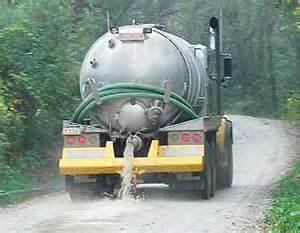from Appalachia Resist!

A banner has been placed over the gates that reads “12 TONS OF SOIL AND WATER CONTAMINATED. K&H2 NOT SAFE”. Supporters wearing white hazmat style suits and ventilator masks are gathering, holding signs and chanting. Cummings herself is wearing a ventilator, noting that at least 4 workers have died since 2010 from exposure to frack waste, which contains high rates of benzene and other chemicals that can sicken people and be fatal when inhaled. Cummings says, “When a community says it does not want injection wells because we don’t believe they are safe, and our public servants ignore the desires of the public and our locally elected officials, the only recourse left to us is to use our bodies to stop the toxic frack waste from being injected into these dangerous wells.”
Peggy Gish, 71, who was an organic farmer in Athens County for more than 30 years, sits alongside Crissa occupying the space in front of the gate. Gish also plans to remain as long as possible. Of her action, Gish says, “I do this because I care about the health and safety of the people living in this region and for future generations who also want clean water, air, and land. Energy companies should not be allowed to make huge profits at the expense of the health and safety of the local people.”
8 people were arrested at this same location earlier this year for protesting the injection of radioactive toxic fracking waste in Athens County, after the ODNR ignored hundreds of public comments as well as the objections of the Athens County Commissioners,.
Through a records request, community members have found ODNR reports showing that in January 2014, the drill rig at the K&H 2 unexpectedly hit saltwater and gas. When the pit overflowed with the fluid, a nearby creek was contaminated. After well operators initially attempted to build a containment wall with the contaminated soil, the company was told to remove up to 20 tons of contaminated soil and water.
Also during January, ODNR reports show that approximately 410 feet (or 200 bags) of cement disappeared down the well shaft during well construction. Though this signifies probable cracks and fissures in the surrounding rock into which the cement may be leaking, neither K&H Partners nor ODNR has completed an adequate follow up investigation.
The local community, including the Athens County commissioners, has repeatedly called for proper seismic testing and geologic characterization at the K&H site. The ODNR has ignored these demands. Now, the accidental spill, coupled with the enormous loss of cement brings up serious concerns about possible contamination of the aquifer. ACFAN and Appalachia Resist! have recently submitted a complaint about the K&H 2 to the federal EPA, charging that the problems and the conduct at the K&H 2 site constitute violations of Ohio Revised Codes 1501:9-1-07, and 1501:9-1-08, which concern prevention of contamination, and safety of well construction, as well as a violation of the Federal Safe Drinking Water Act.

